Rose Gold Jewelry: Overview, Care, and Maintenance Tips
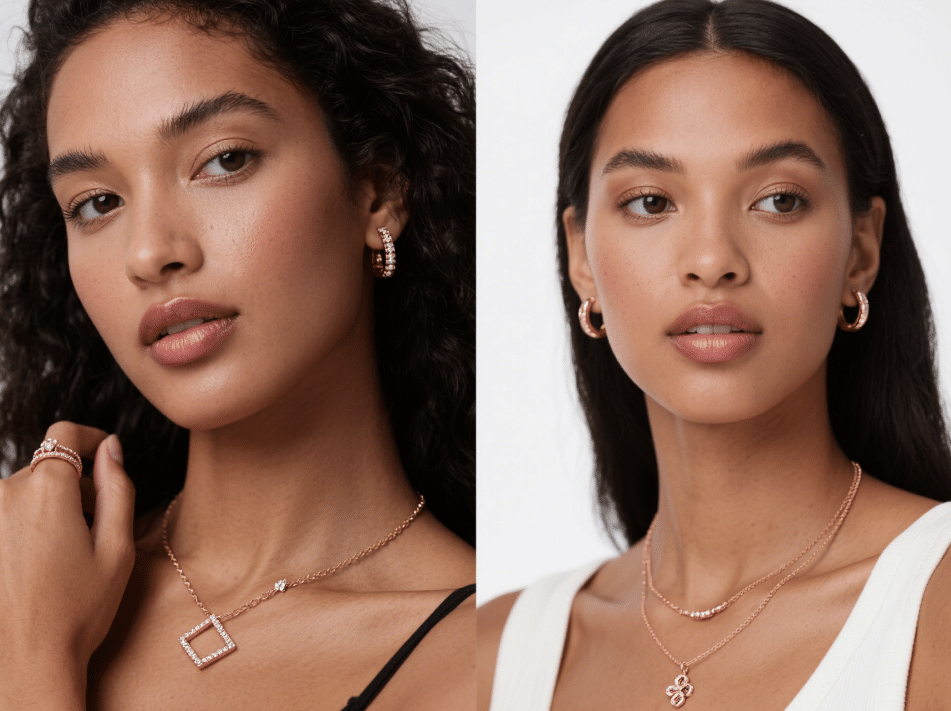
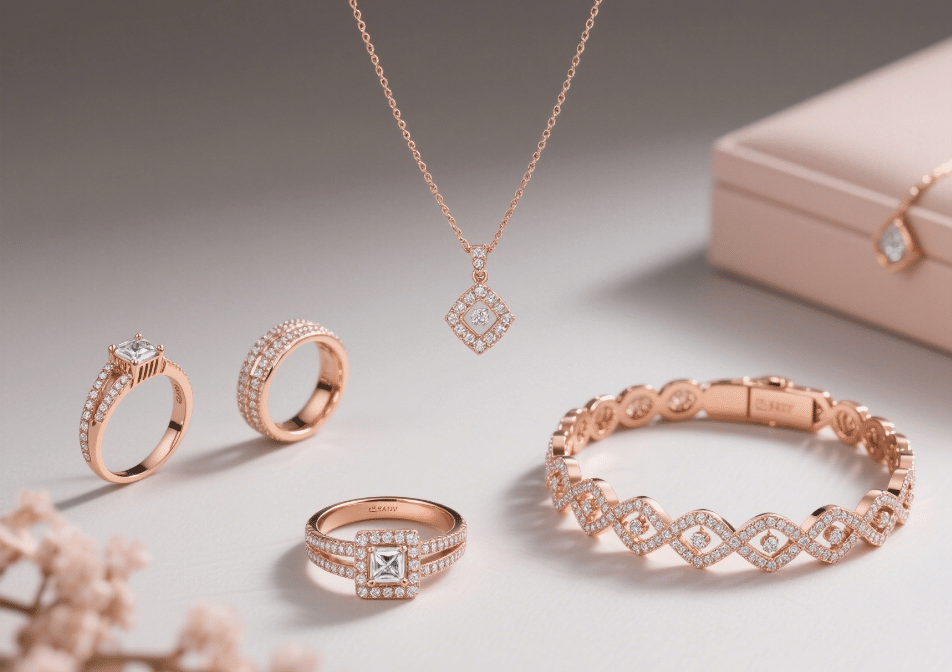
Rose gold jewelry is made by mixing pure gold with a copper alloy. This combination is responsible for the metal’s soft, rosy tone. Rose gold works equally well with minimalist and statement designs.
It moves easily with you from the office to home on the weekend to out on the town with friends. You’ll discover rose gold in bracelets, necklaces, clocks and even small hoop earrings. This adaptable metal pairs well with all aesthetics.
As you can see, the color really does pop beautifully against every skin tone! It brings a hard shine beauty that doesn’t feel overdone or gaudy, just fresh. Since many people enjoy how rose gold appears alongside white, yellow gold and even silver items, stacking or combining is a breeze.
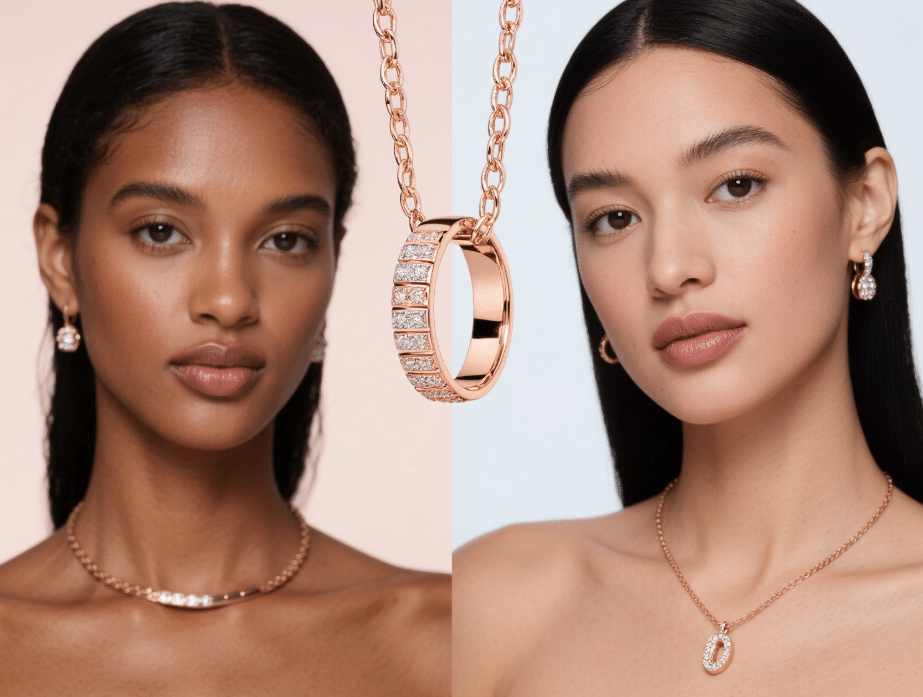
In the second part, I explain how to shop for, wear, and care for rose gold jewelry.
What Exactly Is Rose Gold?
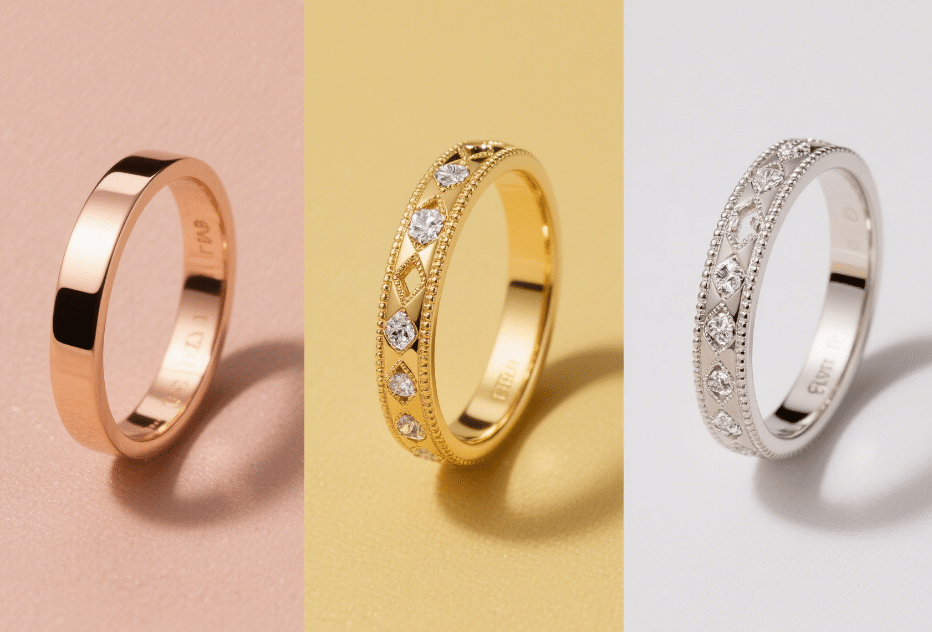
Rose gold is unique among popular metals in the jewelry-making world for its blushing, warm hue and combination of metals. It derives its pinkish hue by combining yellow gold with copper. This unique blend produces a warm golden-pink color that manages to be simultaneously trendy and timeless.
Unlike yellow or white gold, this gold alloy is known for its distinct bronze hue and warm aesthetic. It brings a cool new twist to classic jewelry making. Here’s what sets rose gold apart from the rest.
1. Defining This Unique Gold Alloy
Now what exactly is rose gold? Rose gold is not a naturally occurring metal. It’s an alloy, which, as you know, is a combination of metals.
Pure yellow gold is alloyed with copper to give gold that stunning pink color. To finish it off, sometimes artisans include a pinch of silver or zinc for an additional flavor. This combination not only affects the color but the intensity.
2. The Magic Mix: Gold Meets Copper
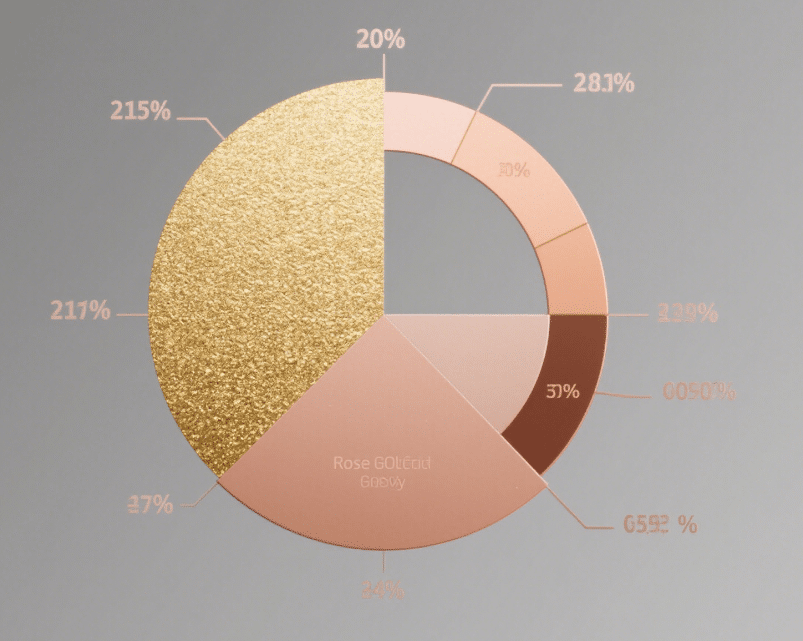
The most popular combination of metals for rose gold is 75% gold and 25% copper, forming 18-karat rose gold. The majority of jewelry you will find is made with 14-karat rose gold, as it is more durable and practical for everyday pieces.
At HonHo Jewelry, our 9k rose gold is made with an alloy of 58.3% gold, 38.3% copper, and a trace of silver and zinc. To make our 18k gold, we mix 75% gold with 23% copper, 1.3% silver and 0.7% zinc.
3. A Brief History: From Russia With Love
Rose gold originally appeared in 19th-century Russia, where it was frequently referred to as “Russian gold.” It quickly became a favorite for ornate, fine jewelry, and very quickly made its way to other countries.
4. Why It Differs From Yellow Gold
Adding copper to yellow gold alters color and texture. Rose gold doesn’t develop patina, whereas yellow gold retains its vibrant, lustrous appearance.
5. Contrasting With White Gold’s Look
White gold achieves its hue by alloying gold with metals such as nickel or palladium. It has a reflective, cool-like quality, whereas with rose gold, it remains very warm and inviting.
6. Understanding Karats in Rose Gold
Karats indicate the level of pure gold in the alloy. Most rose gold jewelry is made with 14k or 18k compositions.
This balance between gilding and strength provides a piece with both a touch of gold and the density of copper that creates such a rich tone and saturation.
7. The Warmth Factor: Unique Appeal
This mixture is what gives rose gold its flattering, skin-softening quality. This delicate hue complements a range of skin tones and brings a warm aesthetic to everyday outfits and fancier ensembles alike.
Real Rose Gold vs. Colored Metal
Rose gold, especially in its most realistic form, glows with a rosy hue that’s hard to ignore. Not all pink metals are real. The bottom line Learning to spot real rose gold will go a long way toward protecting this lovely metal’s aesthetic—and monetary—value.
Knowing how it will stand the test of time is equally important. Jewelry stores have extensive selections to look through. Some are produced from real gold mixtures, others are just colored metal or plated jewelry. Each option comes with unique pros and cons. This is even more the case when you take wear, care, and color longevity into account.
Spotting Genuine Rose Gold Alloy
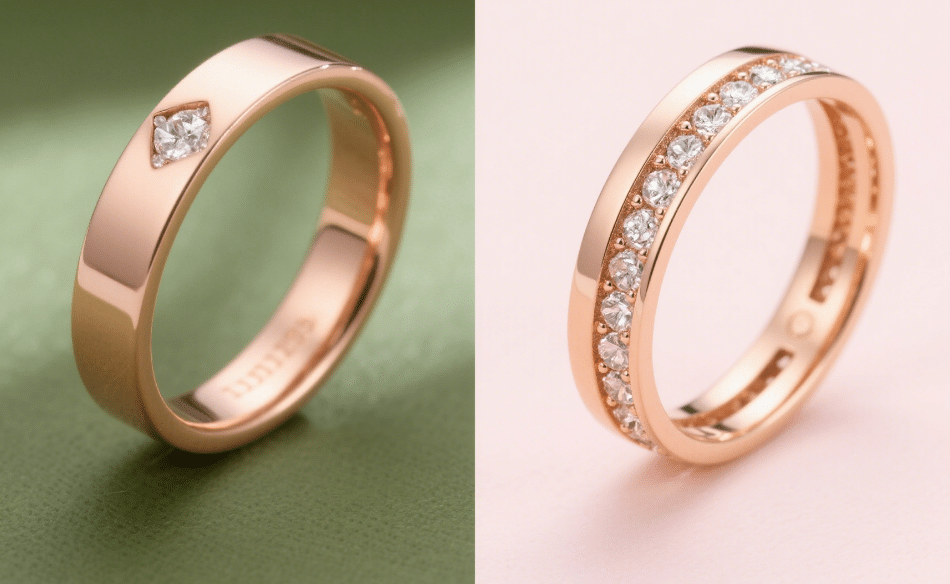
Real rose gold is made by alloying pure gold with copper. That same copper is what gives it the pink hue everyone adores. For example, 14K rose gold is about 58% gold and 42% metal, mostly copper, which means it’s sturdy for daily wear.
Increase that to 18K and you have 75% gold, which compounds the softness of that metal while producing a much deeper color. Those who are allergic to copper may sometimes have reactions to rose gold. Know what metals are in your jewelry before you buy, and you can avoid getting burned!
Real rose gold will display its hue throughout, not just on top.
Understanding Rose Gold Plating Issues
Other colored metal pieces are only pink on the surface. For a lower price point, jewelers can plate a base metal—like brass or sterling silver—with a thin layer of rose gold. While these pieces are beautiful at first, due to the low durability of this alloy, the color will fade, especially in rings and bracelets that are worn frequently.
With plated jewelry, you’ll likely need to re-plate after a while. Manufacturers such as HonHo Jewelry provide options in real rose gold alloys and in plated to accommodate a wide variety of budgets and tastes.
Longevity: Alloy vs. Surface Color
Solid rose gold alloy will never fade or change color. Scratches or dings are not going to affect the pink hue. With plated items, colors can wear away, exposing the base metal beneath.
For a true, timeless style, real rose gold alloy prevails.
Why We Love Rose Gold
Rose gold is no ordinary metallic—it’s hard to resist the vintage blush beauty and the opulent history behind it. Rose gold makes an appearance in everything from high-end jewelry to unique gifts to trendy casual wares. In fact, it holds a top position on the firmament for traditional and contemporary looks.
This is a reason why it’s so popular among people who want it for their engagement ring and plain, stud earrings.
Its Unique Romantic Hue Explained
Rose gold derives its pretty pinkish hue from an alloy of gold with copper. This combination imparts a delicate pink luster that’s luxurious yet tender. It’s the perfect middle ground—color that feels really luxe but isn’t so flashy as to ostentatiously flaunt itself.
The nine-karat pieces have a gold content of only 37.5%. That mixture provides them durability for everyday use while still allowing stunning rose coloration to shine through. From dainty stacking rings to intricate necklaces, this hue complements both contemporary and vintage styles.
Individuals with a romantic disposition frequently choose rose gold for their wedding bands and anniversary presents.
Flattering Across Many Skin Tones
Rose gold looks good on everyone. Its pink base isn’t as jarring as yellow gold can be, making it more versatile and inconspicuous especially in fair, medium, and deeper shades.
Whether you opt for a chunky bracelet or a dainty chain, the rosy hue never seems inappropriate. People love how it enhances everything from warm to cool undertones, so it’s a no-brainer for presents.
Versatility in Modern Jewelry Design
It complements white gold, silver and even colored stones such as morganite or diamond. This quality makes it super easy to mix and match.
You could absolutely wear rose gold rings with matte yellow gold hoops and even layer with satin finish silver chains! Its versatility to pair seamlessly with other metals and stones provides you the opportunity to create a variety of styles to make it uniquely yours.
A Softer Alternative to Yellow
On screen, rose gold appears warmer than high-carat yellow gold. It projects a soft luster that feels luxurious, not gaudy. For anyone who prefers a statement color without the drama, rose gold provides a calm and soothing alternative.
That makes it perfect for formal events and everyday use alike.
My Personal Take: Timeless Appeal
Rose gold has a past as a beautiful, mythical romance. It’s the sort of metal you can hand down and it never looks old-fashioned.
Whether it’s in a cherished antique or the latest collection, here’s why you always love rose gold, and how to wear it today.
Styling Your Rose Gold Pieces
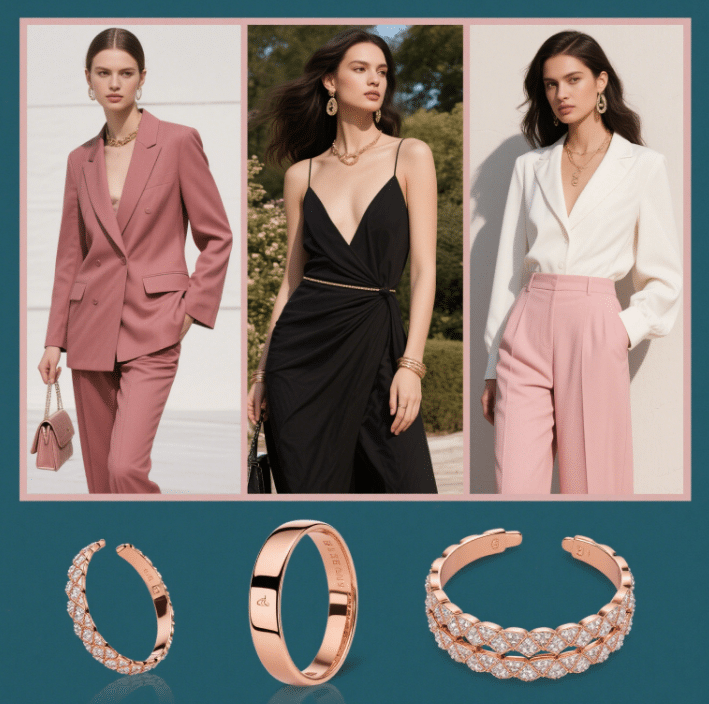
Rose gold jewelry is unique with its warm, rosy hue and its ability to add a touch of elegance wherever it goes. You end up with a lovely warm tone that adds some whimsy no matter how you style it.
With 14K rose gold, you’re wearing a piece made from 58.3% pure gold, so there’s a solid feel and a gentle shine that lasts. Caring for rose gold pieces is a breeze as well. A light buff with a rose gold–specific polishing cloth regularly helps the finish stay clean and color vibrant.
Mixing Metals: Dos and Don’ts
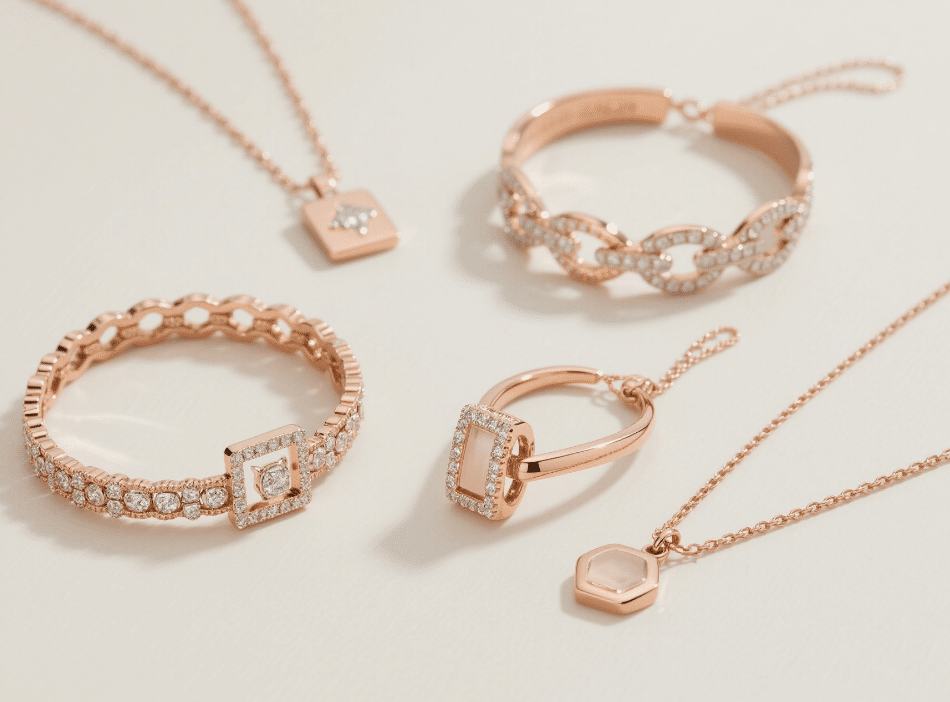
Rose gold has become quite the trend, so mixing metals is a great way to enhance your rose gold pieces, especially with silver or white gold. Pair that with something more classic, and you achieve the perfect balance of edgy and chic.
Try stacking rose gold rings with slim silver bands or layering a rose gold necklace with a white gold chain. Avoid overdoing metallics at once. Don’t go bold! Limiting yourself to two types at most makes it easier for all of your elements to visually blend together.
Pairing With Gemstones Effectively
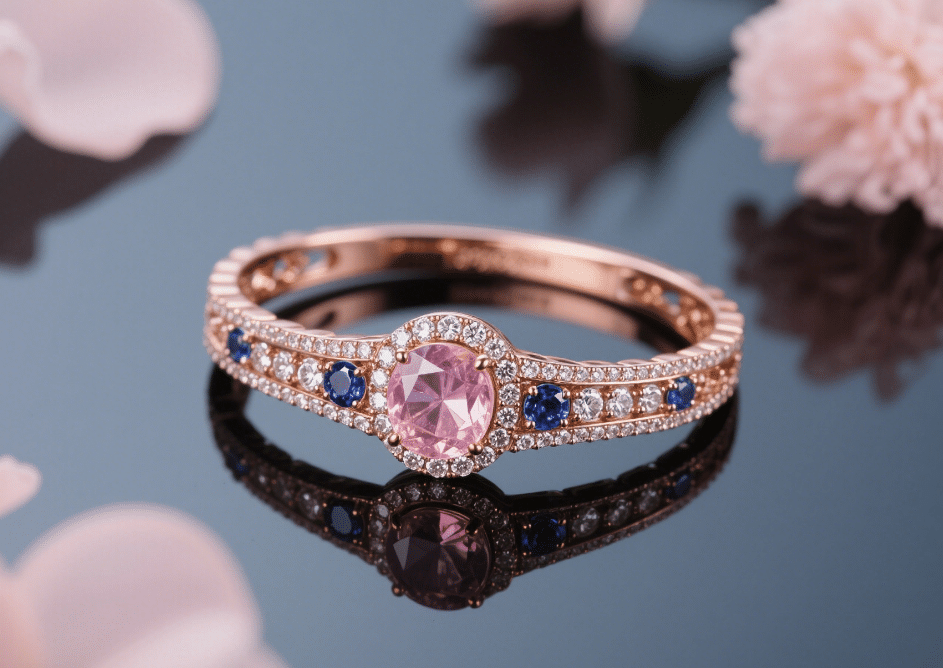
Introduce a sense of peace and tranquility to your style by pairing rose gold with stones such as morganite, pearls, or even soft-colored blue sapphires. If you want to add just a touch of color, try emerald or amethyst.
The pink tone of the metal makes whichever gems you choose to use pop, but it never gets overwhelming.
Day-to-Night Rose Gold Looks
Rose gold easily complements your daytime office chic look to your evening out on the town ensemble. Basic small hoops or a simple thin bracelet match well to button up work shirts and go-to weekend jeans.
For a night out or a party, go for bigger statement earrings or a large rose gold cocktail ring. The same necklace would be appropriately at home with a suit as it would be with a little black dress.
Complementing Different Fashion Styles
Pairing a vintage-style dress with a rose gold pendant adds a touch of retro-jewel romance. For statement outfits, you can pair rose gold with highlighter-hued blouses or printed pencil skirts.
Even your most basic tees get a fashion-forward boost with a little good old rose gold shimmer.
Keep Your Rose Gold Radiant
Rose gold jewelry gleams with a rosy, golden hue that adds unique warmth to any jewelry wardrobe. Its distinctive combination of gold and copper imparts a dazzling appearance, as well as lasting durability. With proper maintenance, rose gold remains as beautiful and luminous as it was on the day of your purchase.
Learn how to make these few easy lifestyle changes to your daily routine. You’ll have all the tools you need to shine your treasures like the day you first unwrapped them!
Simple Steps for Regular Cleaning
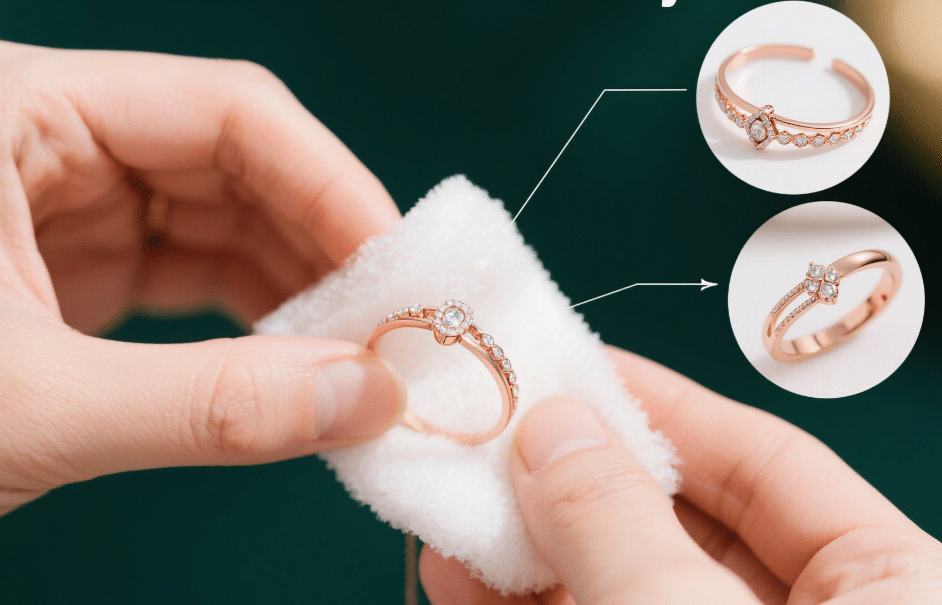
A simple cleaning habit is the secret to ensuring that your rose gold stays beautiful and bright. Our go-to method is a bowl of warm water with a drop or two of gentle dish soap. Soak iconic rose gold rings, bracelets, or necklaces for a few minutes.
Thoroughly scrub around/underneath with a soft toothbrush, deep inside crevices. Flood area with clean water and pat dry immediately with a very soft cloth or towel. A jewelry cloth specifically designed for use on rose gold is best to restore a beautiful luster.
This soft cloth polishes the screen and takes care of all minor smudges.
What Cleaners to Avoid Strictly
Avoid abrasive substances such as bleach, ammonia, or acetone. These abrasive practices can permanently dull the shiny finish and damage the integrity of your jewelry over time.
Even toothpaste or baking soda are too abrasive for rose gold. So plain soap and water is the best and safest option.
Storing Pieces to Prevent Scratches
Protect each piece by storing it in a soft pouch or a jewelry box lined with cloth. Keep them away from other metals. This prevents scratching and ensures the finish remains blemish-free.
For instance, stackable rings can have their own little slots.
Professional Cleaning: When It’s Needed
If your jewelry is looking dull or has accumulated residue, a professional cleaning will restore its luster. Professional jewelers are equipped with the right tools and solutions that can get into deep areas without risk.
This step should really be done no more than once a year.
Does Rose Gold Tarnish Over Time?
…rose gold does a good job of retaining its color due to the combination of gold, copper and sometimes a small percentage of silver. After a while you may see a change—rose gold jewelry is susceptible to becoming darker or redder in color. This is completely natural and attributed to the copper in the alloyed metal.
Overall, pure gold doesn’t change very much over time. Copper on the other hand is much more reactive, leading the rose gold to a tinting effect over time.
Understanding Copper’s Role in Color Change
The reason rose gold has that stunning, warm tint is due to the addition of copper. Every piece of rose gold is a 14K gold and copper blend. That’s because copper adds that warming rosey tint but it decides to react with everything around it in the air.
With time, the chemical process gives the jewelry a deeper, more beautiful hue. For instance, a smooth rose gold chain or a dainty ring will exhibit this change sooner with daily wear compared to a bolder design.
Tarnishing vs. Patina: Know Difference
Tarnishing and patina are two very different things. When rose gold tarnishes, it refers to the surface becoming discolored or grayed. Patina, a natural byproduct of corrosion, forms a protective layer that protects metals.
This patina can create a lovely romantic vintage look to jewelry. Most people appreciate the patina as it brings added charm and character. A ring that develops a patina can seem more intimate, personal, or one-of-a-kind.
How Environment Affects Your Jewelry
This is where your day-to-day habits come into play. Sweat, saltwater, chlorine, soap, and even the pollution in the air where you live can all affect the appearance of your jewelry. If you’re an avid swimmer, your rose gold jewelry will tend to tarnish faster.
Residing in a climate with a lot of humidity can contribute to this phenomenon as well. HonHo Jewelry specializes in high-end plated fashion jewelry. Sad, but even the best of plating will need to be re-plated in two to three years.
Restoring Shine if Color Darkens
When the surface starts to look hazy, using a soft cloth with warm soapy water can wash away dirt and restore its shine. Especially with plated pieces, a little delicate handling goes a long way to maintaining the gleam.
Once the plating begins to wear off, a jeweler should be able to re-plate it for you. Regular cleaning and keeping your jewelry dry helps it keep looking good.
Smart Rose Gold Shopping Guide
When I shop for rose gold jewelry, I’m looking for straight facts and honest worth. Rose gold glows with a romantic blush hue from its formulation of yellow gold, copper, and a touch of silver. Karat value matters—18K rose gold contains 75% gold, whereas 14K only has 58.3%.
18K gold will give you a deeper color and more money for your gold. On the other hand, 14K gold is harder and more durable against daily wear and tear. Others chose 10K, which is less expensive and more durable, with 41.7% gold.
Factors Influencing Rose Gold Prices
Price increases as gold content increases. With 18K, I’m receiving more gold by weight, but I’m sacrificing scratch resistance. The ratio of copper to silver determines the color and price.
Super simple inventories from major retailers such as Whiteflash, James Allen, and Blue Nile give distinct explanations of the pilings and alloys.
Judging Craftsmanship and Quality
In today’s world, a high quality detailed inspection of the piece is essential. Clean solder joints, even edges, and solid placements reflect quality and thoughtfulness. In rings, I check for hallmarks or stamps inside the band, which indicate the gold content.
Reputable, high-quality shops are quick to provide third-party certificates to substantiate what they sell.
Ethical Sourcing Considerations Today
Now, I look for jewelry vendors whose practices reflect a concern for people and the care of the land gold comes from. Many responsible jewelers provide information about the sources of their gold or let you choose recycled gold.
Stores with strong values will be honest about this.
Common Misconceptions Debunked
Many people believe rose gold will fade or chip; with a proper blend, it can be very durable. Stackable rings and layered looks are ideal, too, because rose gold is incredibly versatile as it easily mixes with other metals.
Rose gold’s association with romance and its rich history, from ancient Egypt to contemporary courtship, remain intact.
Rose Gold Trends and Innovation
Rose gold continues to allure the masses with its warm, subdued rosy hue and classic appeal. In the past few years, it’s reemerged with a vengeance, featured in statement pieces and quiet accents alike. This rare-colored metal is a combination of gold and copper, originally created by Carl Fabergé in Russia.
Today, it’s a go-to in traditional and modern applications alike. Its undertones versatility allows it to completely enhance any look and skin tone. An estimated 80% of women will tell you that rose gold complements their tone, which is a testament to how deep of an appeal rose gold runs.
Current Popular Rose Gold Styles
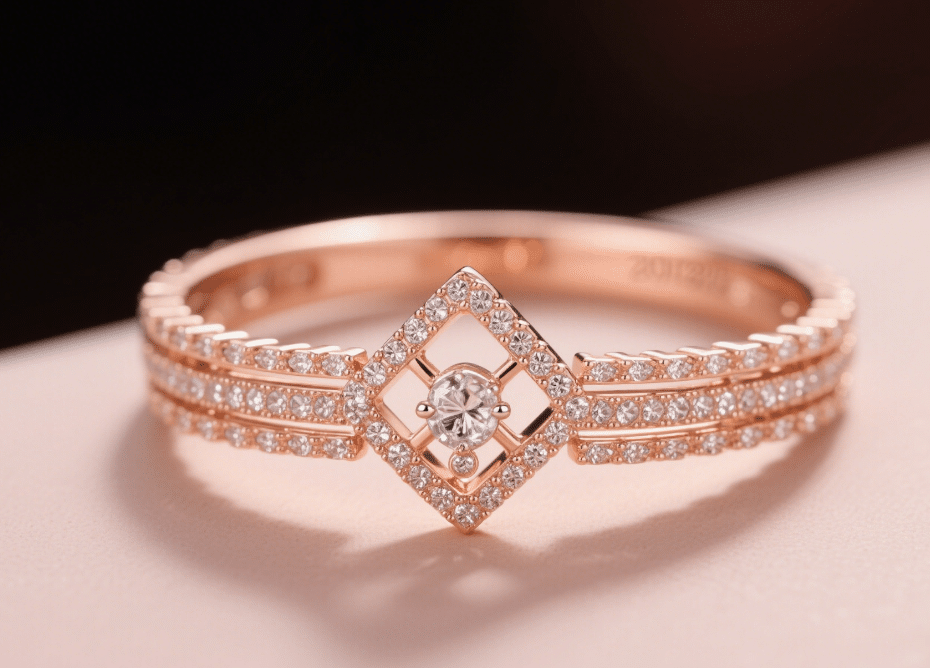
Currently, rose gold is everywhere and in everything. You’ll find it in stackable rings, layered chain necklaces, delicate bangles and attention grabbing statement earrings. Rose gold makes an excellent band for engagement rings, often combined with white or yellow gold for the trendy mixed-metal appearance.
Minimalist designs—from slim bands and dainty hoops to delicate pendants—make use of rose gold to lend the piece warmth and depth while keeping it understated. Inventive designs with geometric forms or luminous colored gems demonstrate that rose gold can feel modern. Beyond that, it adds contemporary edge to any look. It suits both casual and formal styles.
Unique Textures and Finishes
Texture Designers of all types enjoy working with rose gold and playing with different textures. You’ll find finishes ranging from matte to brushed, hammered and high-polished surfaces. Many of the pieces include frosted or sandblasted surfaces creating a soft, graceful aura.
Some, like Richard Wright, dare to mix both granular and polished textures in one confident stroke. This handwork imbues each piece with an individual spirit. Rose gold reflects beautifully and stands the test of time. That’s what makes it such a perfect option for your daily style!
How Designers Push Boundaries
Contemporary artisans, as seen with HonHo Jewelry, continue to discover inventive approaches to mold rose gold. Then they blend it with gemstones, enamel and even wood! Many designers complement their rose gold with dark stones or pearls to create an interesting juxtaposition.
Mixed-metal designs, stacking sets, and custom engraving display just how flexible this metal can be. Rose gold will always be a winning option for those looking for jewelry that breaks new ground while still standing the test of time.
Conclusion
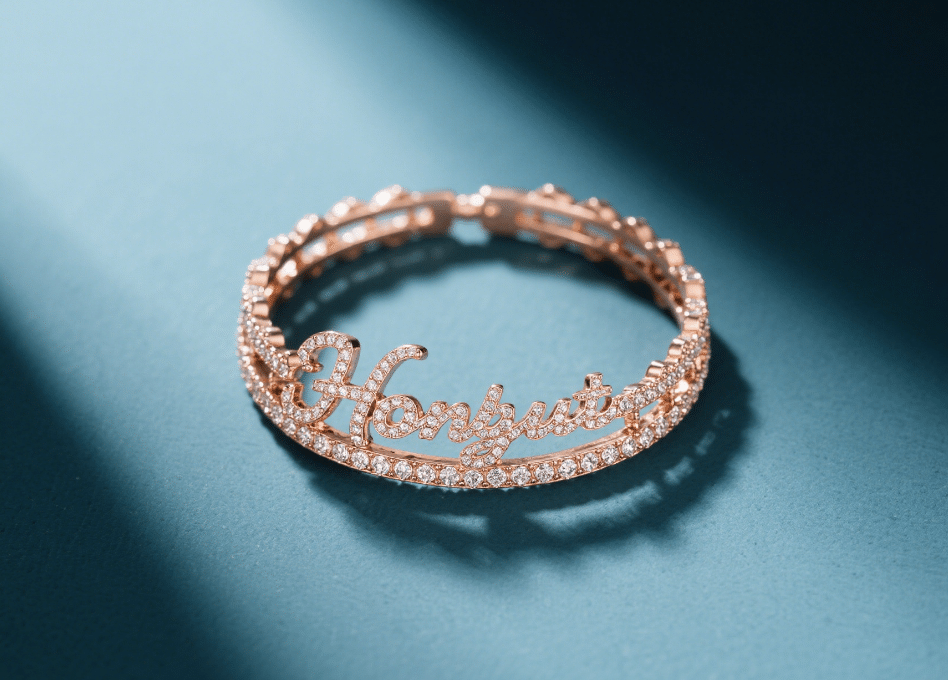
Which means rose gold is equally at home in any combination—from street style to work wear to black tie. When worn, each piece emits a flattering glow with the effect of bringing warm tones to the skin. I appreciate that rose gold is still feeling fresh and works well with both gold and silver equipment.
Simple maintenance ensures it stays dazzling – just choose the genuine article and your treasures will stand the test of time. Trends QRIDI shifts from big hoops to tiny earrings, so you end up with tons of unique earrings to flaunt your aesthetic. Consider how rose gold works with your overall aesthetic, but don’t be afraid to play around. Have your own story, tip, or favorite rose gold thing to share? Leave your ideas in the comments and let’s discuss what’s been effective for you.
Frequently Asked Questions
What is rose gold made of?
In reality, rose gold is simply an alloy of pure gold, blended with copper and sometimes a trace of silver. This is because the copper contributes a warm pinkish-red hue to the alloy that creates the desired rose color, distinguishing it clearly from yellow or white gold.
Is rose gold real gold?
Are you wondering if rose gold has real gold in it? Its hallmark (just like 14K or 18K) indicates how much gold it contains. The color comes from added copper, not a coating or paint.
Does rose gold tarnish or fade over time?
Rose gold does not tarnish as silver does, although the copper present in the alloy can lead to slight darkening over several decades. A quick routine cleaning will keep it gleaming and new.
How do I clean rose gold jewelry?
Clean with mild soap and warm water. Shallowly clean with a soft toothbrush, rinse and dry with a delicate fabric. Don’t use harsh cleansers or abrasive objects to avoid scratching.
Can people with sensitive skin wear rose gold?
People with sensitive skin may have no problems wearing rose gold, particularly higher karats such as 18K. Those who are allergic to copper will likely experience a reaction to the alloy.
What outfits complement rose gold jewelry?
Rose gold looks lovely against a natural skin tone, blush pink, navy and black. Its warm glow enhances both day and evening ensembles, bringing a new elegance to everyday styling.
Is rose gold jewelry a good investment?
Rose gold jewelry does maintain its value just like any other gold alloy. Its beautiful pink hue and continued ascendancy in popularity make it a savvy, chic purchase for any jewelry wardrobe.
share this recipe:
Still hungry? Here’s more

Gold Filled vs Vermeil Guide Differences Durability and Value
What Is Gold Filled Jewelry? Gold filled jewelry is my go-to recommendation when someone wants

How Much for a Gold Necklace 2026 Price Guide and Tips
Understanding Gold Purity and Karats When people ask “how much for a gold necklace?”, the

Spiritual Jewelry Symbols Guide- Meanings and How to Choose
How to Use This Spiritual Jewelry Symbols Guide Spiritual jewelry only works for you when
Ready to Design Your Own Jewelry?
Have an idea in mind or need help shaping it? From sketches to finished pieces, our custom jewelry team will work with you step-by-step to bring your vision to life.
